CVS Group shares surge over 10% after FY25 EBITDA beats estimates
Introduction & Market Context
Sangamo Therapeutics (NASDAQ:SGMO) presented its Q2 2025 corporate update on August 7, highlighting its strategic focus on neurology-based genomic medicines while facing significant financial challenges. The company’s stock closed at $0.4826, down 8.93% for the day, and has fallen dramatically from its 52-week high of $3.179, reflecting investor concerns about its cash position despite scientific progress.
The genomic medicine company is leveraging its zinc finger technology and AAV delivery platform to target neurological diseases with high unmet needs, including chronic neuropathic pain and prion disease, while advancing late-stage programs in Fabry disease and hemophilia A.
Pipeline Progress
Sangamo’s pipeline spans both wholly-owned neurology programs and partnered initiatives with major pharmaceutical companies. The company has made significant progress across multiple programs, with several key milestones anticipated in the coming quarters.
As shown in the following comprehensive pipeline overview:

In the neurology space, Sangamo has initiated its first clinical site for the Phase 1/2 STAND study of ST-503 for chronic neuropathic pain, with patient dosing expected to begin in fall 2025. ST-503 targets the Nav1.7 sodium channel through zinc finger repression of the SCN9A gene, potentially offering a novel approach to treating intractable pain.
The following slide details the chronic neuropathic pain program and its anticipated milestones:
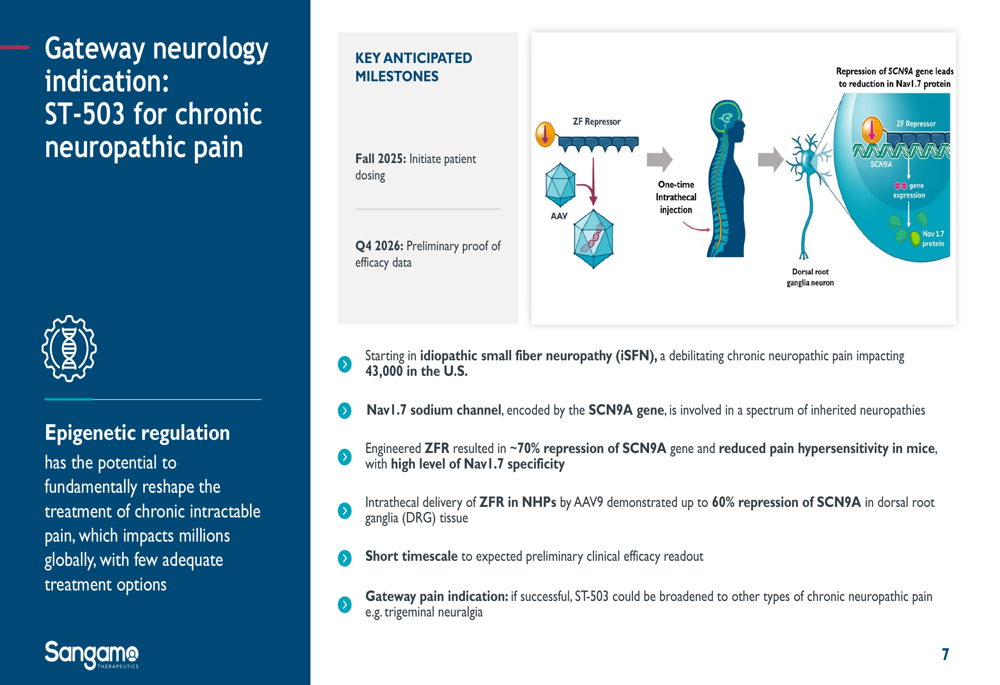
Additionally, the company is advancing ST-506 for prion disease, a fatal neurodegenerative condition with no approved disease-modifying therapies. CTA-enabling activities are progressing, with submission anticipated as early as mid-2026.
The prion disease program leverages Sangamo’s zinc finger repressor technology to reduce prion protein expression, as illustrated here:
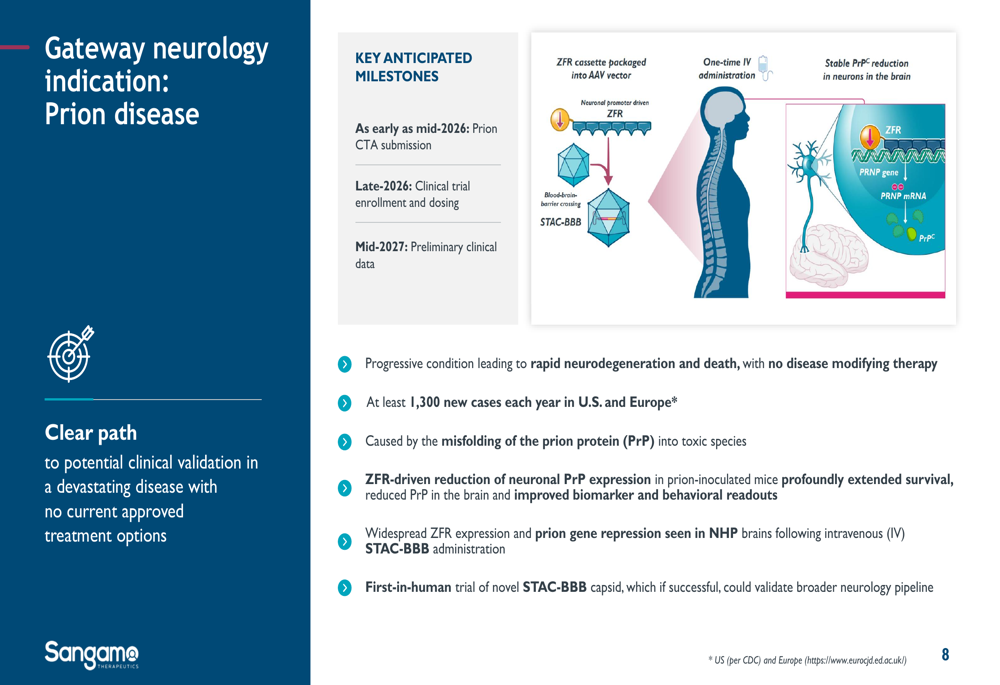
Perhaps the most advanced program is isaralgagene civaparvovec (ST-920) for Fabry disease, which reported positive topline results from the registrational STAAR study. The company plans to submit a Biologics License Application (BLA) in Q1 2026.
Technology Platform
Sangamo’s competitive advantage stems from its proprietary zinc finger epigenetic regulation technology combined with its AAV capsid delivery platform. The company’s STAC-BBB capsid has demonstrated superior blood-brain barrier penetration compared to conventional AAVs, enabling widespread delivery throughout the central nervous system.
The following image illustrates the enhanced brain delivery capabilities of STAC-BBB compared to conventional approaches:

This technology is particularly valuable for neurological applications, as it allows for non-invasive intravenous delivery to the brain, potentially overcoming a major hurdle in treating CNS disorders.
Sangamo’s zinc finger technology offers several advantages over competing genomic medicine approaches, as shown in this comparative analysis:
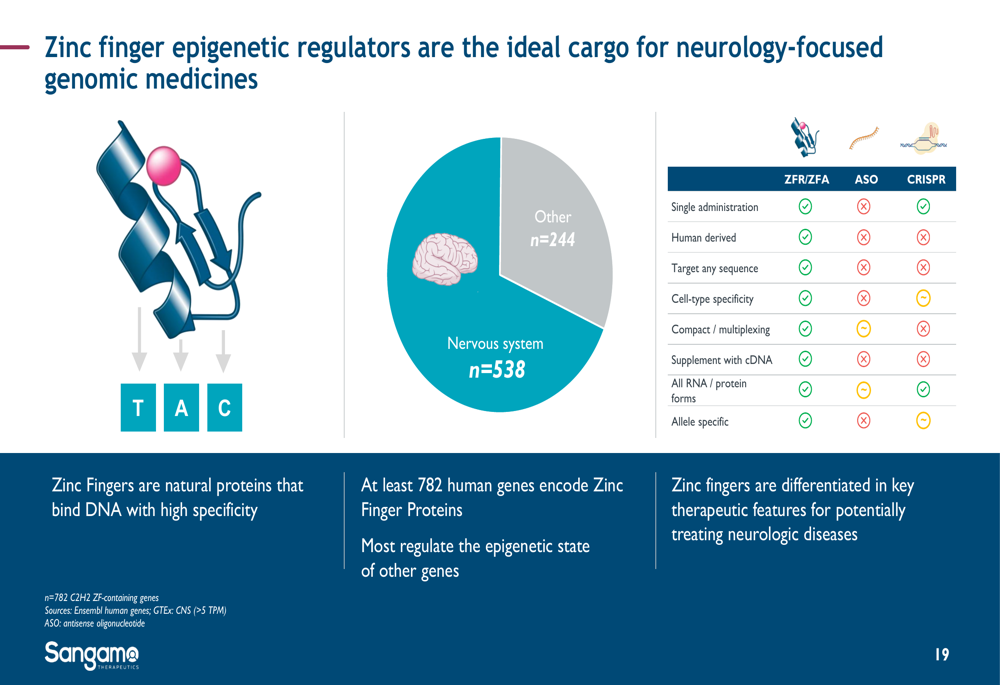
Preclinical data demonstrates the efficacy of Sangamo’s approach in relevant disease models. For example, in a mouse model of prion disease, zinc finger repressors significantly extended survival, even when administered after symptom onset:
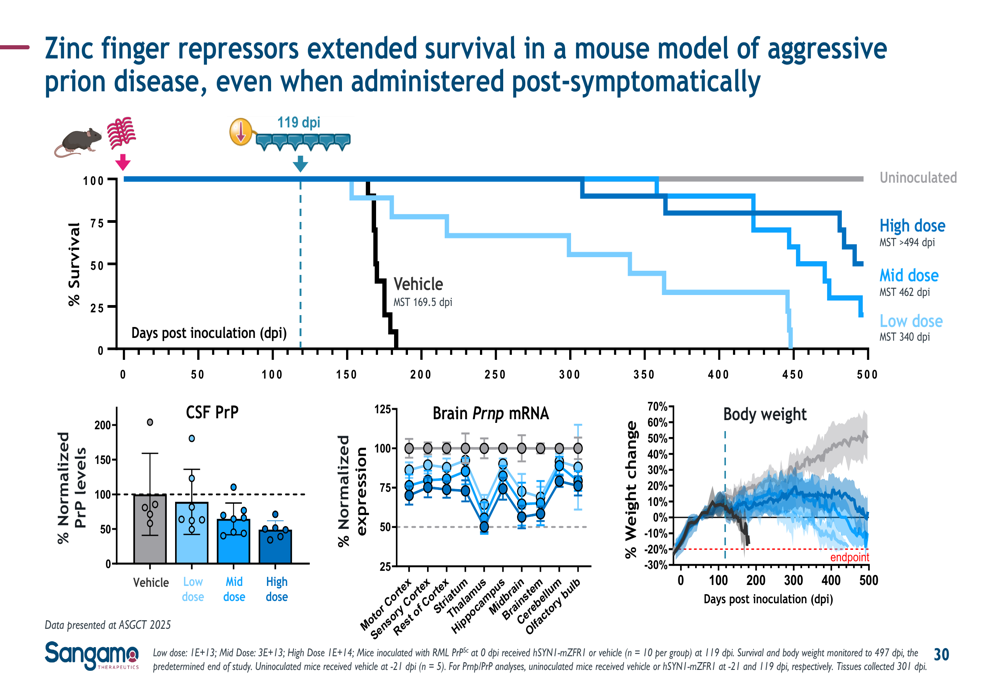
Similarly, the ST-506 program for prion disease has shown promising safety and efficacy in non-human primates, with prion repression levels matching or exceeding those associated with survival extension in mice:
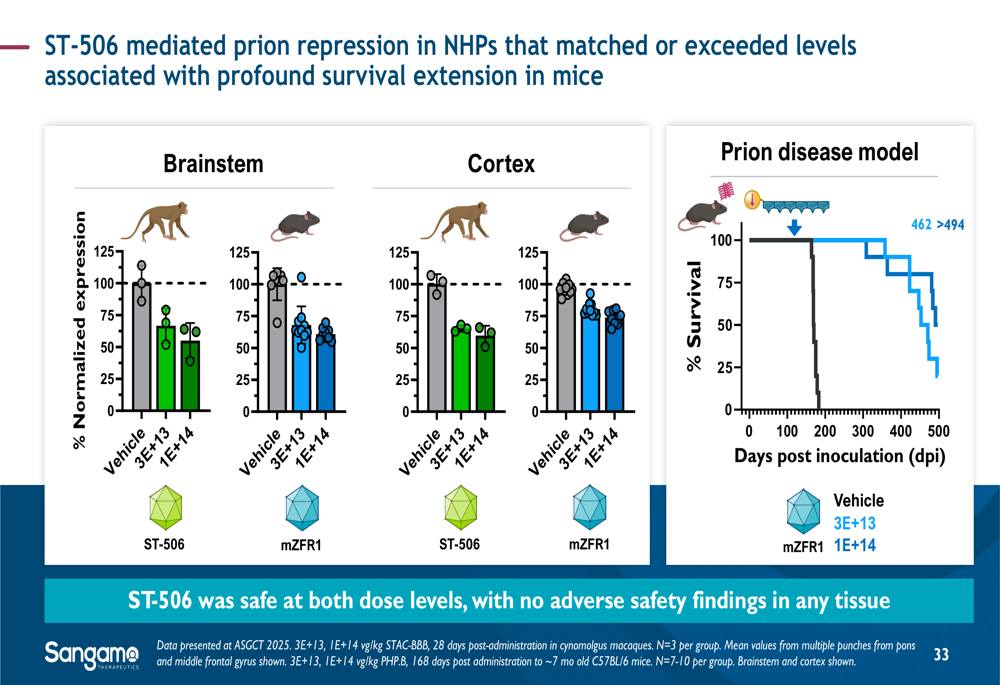
Financial Position
Despite technological advances, Sangamo faces significant financial challenges. As of June 30, 2025, the company reported $38.3 million in cash and cash equivalents, with a projected runway into the fourth quarter of 2025. The company raised approximately $21 million in net proceeds from an underwritten registered equity offering in Q2.
Sangamo’s financial strategy relies heavily on potential milestone payments from partners, with up to $4.6 billion in potential future milestones and exercise fees if all options and targets are exercised. To date, the company has received $88 million in cash from partners.
The company reported $33.0 million in non-GAAP operating expenses for Q2 2025 and provided full-year non-GAAP operating expense guidance of $125-145 million.
Strategic Partnerships
Partnerships with major pharmaceutical companies represent a key validation of Sangamo’s technology and a potential source of non-dilutive funding. Current partners include Genentech, Astellas, Lilly, and Takeda, spanning multiple neurology targets.
The following image shows the brain transduction capabilities that have attracted these partnerships:
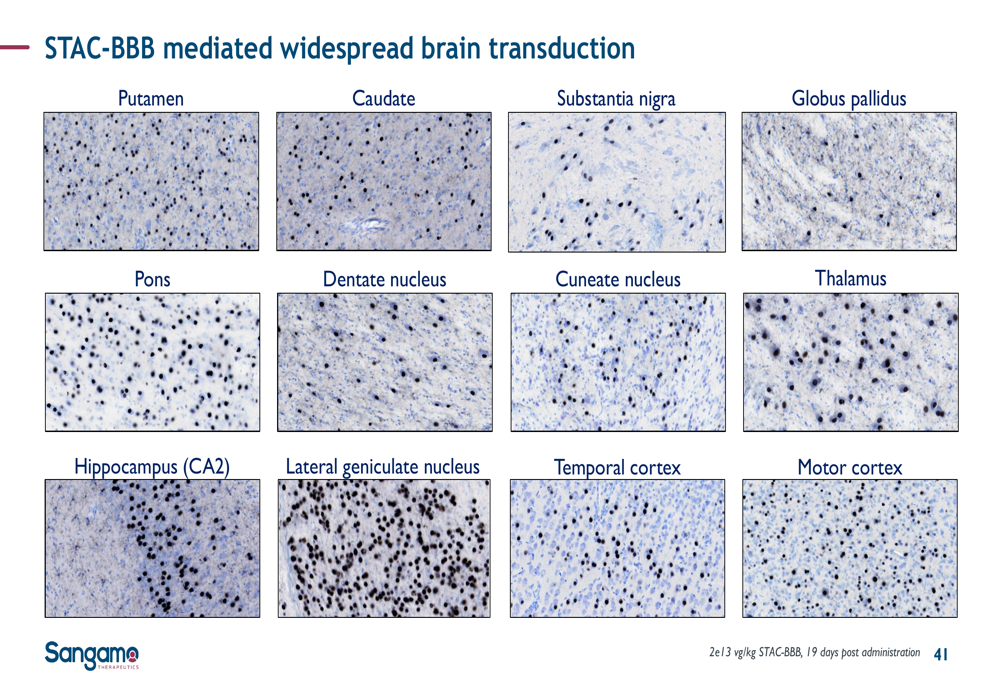
These collaborations provide both validation and potential financial support, with Sangamo highlighting that partner buy-in validates the science while providing non-dilutive capital to advance its pipeline. The company’s agreement with Lilly, announced earlier in 2025, could potentially be worth up to $1.4 billion in milestone payments.
Outlook and Challenges
Sangamo faces a critical period as it balances promising scientific advances with financial constraints. The company’s near-term focus includes:
1. Dosing the first patient in the ST-503 chronic neuropathic pain trial in fall 2025
2. Preparing for CTA submission for ST-506 in prion disease by mid-2026
3. Submitting a BLA for isaralgagene civaparvovec in Fabry disease in Q1 2026
However, with a cash runway extending only into Q4 2025, securing additional funding remains a priority. The company’s stock performance suggests investor skepticism about its ability to bridge the gap between current resources and potential future milestone payments.
The 42.35% stock drop following the Q1 2025 earnings call, as reported in previous coverage, highlights the market’s concerns about Sangamo’s financial sustainability despite its technological promise. The company will need to demonstrate clear progress in its clinical programs and potentially secure additional partnerships or financing to restore investor confidence.
Full presentation:
This article was generated with the support of AI and reviewed by an editor. For more information see our T&C.
